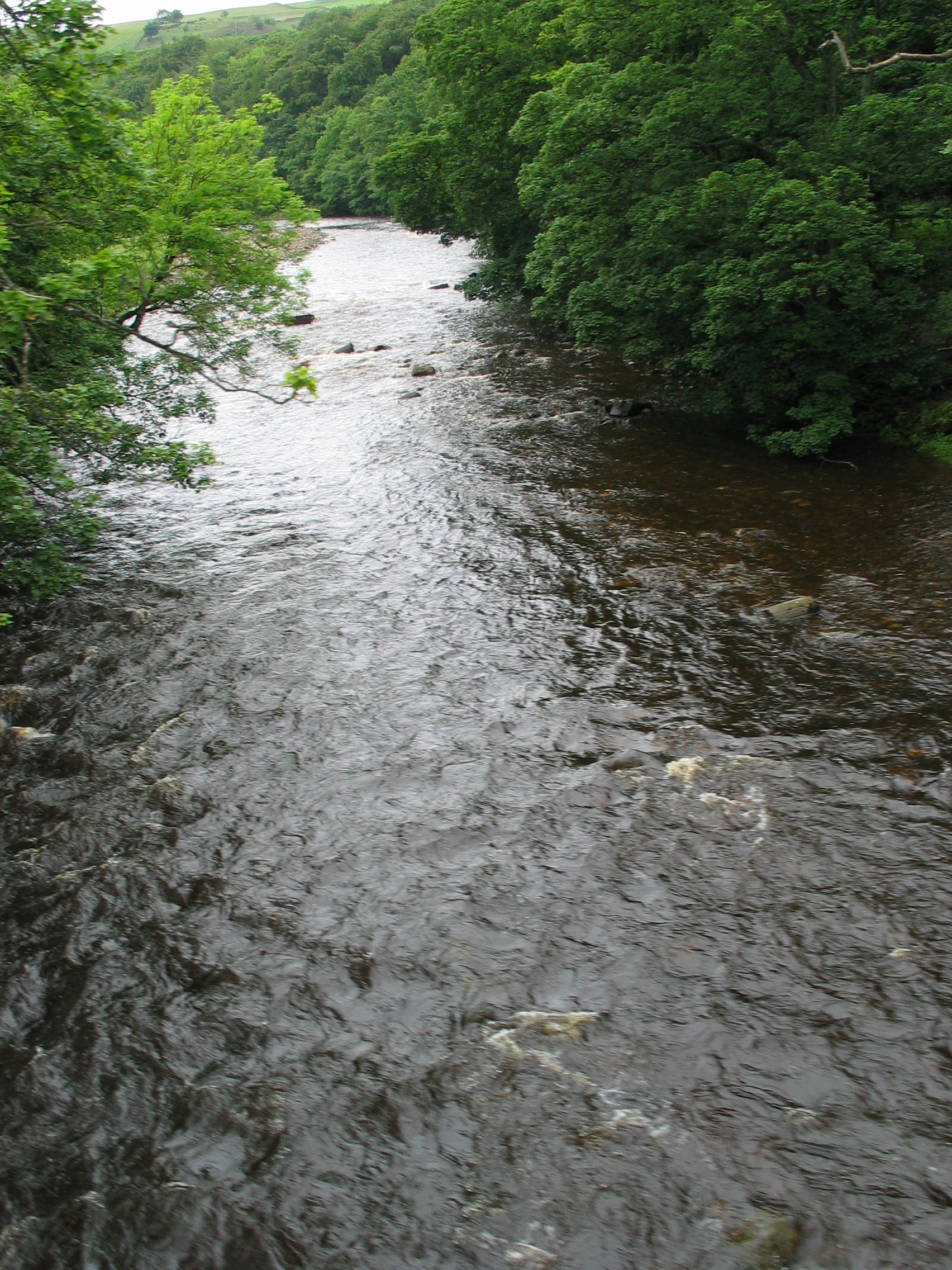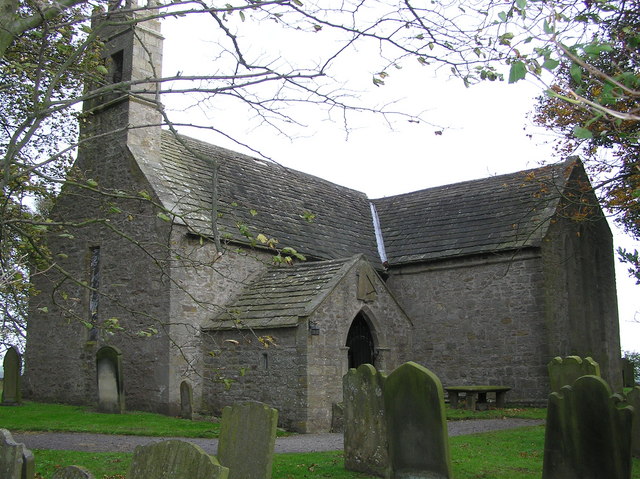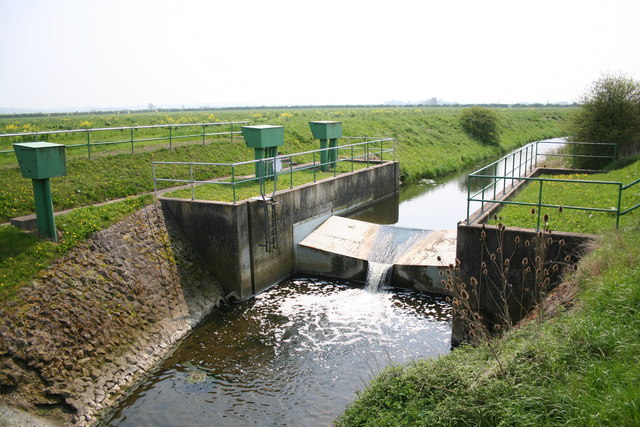|
Bedburn Beck
Bedburn Beck is a long, upper tributary of the River Wear in County Durham, England. The beck and its tributaries, including the Euden, Harthorpe and South Grain becks, have a catchment of , much of which is covered by the coniferous Hamsterley Forest. Course Its headwaters rise on the high ground of Woodland Fell, where it is known as the Spurlswood Beck which flows in an easterly direction through a rocky gill of the same name. It then enters Hamsterley Forest, where it is joined by the Euden Beck and becomes known as the Bedburn Beck. Passing beside the hamlet of Redford before being joined by the Ayhope or South Grain Beck, it then reaches the village of Bedburn where it is bridged by a minor road. Beyond the village it meets the Harthorpe Beck, before descending into the Wear valley between Hamsterley and Witton-le-Wear. Hydrology The flow Flow may refer to: Science and technology * Fluid flow, the motion of a gas or liquid * Flow (geomorphology), a type of mass wa ... [...More Info...] [...Related Items...] OR: [Wikipedia] [Google] [Baidu] |
England
England is a country that is part of the United Kingdom. It shares land borders with Wales to its west and Scotland to its north. The Irish Sea lies northwest and the Celtic Sea to the southwest. It is separated from continental Europe by the North Sea to the east and the English Channel to the south. The country covers five-eighths of the island of Great Britain, which lies in the North Atlantic, and includes over 100 smaller islands, such as the Isles of Scilly and the Isle of Wight. The area now called England was first inhabited by modern humans during the Upper Paleolithic period, but takes its name from the Angles, a Germanic tribe deriving its name from the Anglia peninsula, who settled during the 5th and 6th centuries. England became a unified state in the 10th century and has had a significant cultural and legal impact on the wider world since the Age of Discovery, which began during the 15th century. The English language, the Anglican Church, and Eng ... [...More Info...] [...Related Items...] OR: [Wikipedia] [Google] [Baidu] |
County Durham
County Durham ( ), officially simply Durham,UK General Acts 1997 c. 23Lieutenancies Act 1997 Schedule 1(3). From legislation.gov.uk, retrieved 6 April 2022. is a ceremonial county in North East England.North East Assembly �About North East England. Retrieved 30 November 2007. The ceremonial county spawned from the historic County Palatine of Durham in 1853. In 1996, the county gained part of the abolished ceremonial county of Cleveland.Lieutenancies Act 1997 . Retrieved 27 October 2014. The is the of [...More Info...] [...Related Items...] OR: [Wikipedia] [Google] [Baidu] |
Bedburn
Bedburn is a village in County Durham, in England. It is in the civil parish of South Bedburn, near Hamsterley, and Hamsterley Forest. The Bedburn Beck a tributary of the River Wear The River Wear (, ) in North East England rises in the Pennines and flows eastwards, mostly through County Durham to the North Sea in the City of Sunderland. At long, it is one of the region's longest rivers, wends in a steep valley through ..., flows past the village. The population of this civil parish at the 2011 census was 171. References External links Villages in County Durham {{Durham-geo-stub ... [...More Info...] [...Related Items...] OR: [Wikipedia] [Google] [Baidu] |
Woodland Fell (County Durham)
Bollihope, Pikestone, Eggleston and Woodland Fells is a Site of Special Scientific Interest in the Teesdale district of west County Durham, England. It covers a broad expanse of moorland to the north and east of Middleton-in-Teesdale. The site has a diverse mix of habitats, mainly dry heath, with wet heath and blanket-mire in areas that are poorly drained. The SSSI, which is situated within the North Pennines Area of Outstanding Natural Beauty, shares a common boundary with the Upper Teesdale SSSI to the west, and adjoins Hamsterley Forest on three sides. The area supports breeding populations of a number of species of birds that are listed in the United Kingdom's Red Data Book (Birds), including three—merlin, Eurasian golden plover and short-eared owl The short-eared owl (''Asio flammeus'') is a widespread grassland species in the family Strigidae. Owls belonging to genus ''Asio'' are known as the eared owls, as they have tufts of feathers resembling mamm ... [...More Info...] [...Related Items...] OR: [Wikipedia] [Google] [Baidu] |
River Wear
The River Wear (, ) in North East England rises in the Pennines and flows eastwards, mostly through County Durham to the North Sea in the City of Sunderland. At long, it is one of the region's longest rivers, wends in a steep valley through the cathedral city of Durham and gives its name to Weardale in its upper reach and Wearside by its mouth. Etymology The origin behind the hydronym ''Wear'' is uncertain but is generally understood to be Celtic. The ''River Vedra'' on the Roman Map of Britain may very well be the River Wear. The name may be derived from Brittonic ''*wejr'' (<''*wẹ:drā''), which meant "a bend" (c.f ''-gwair-''). An alternative but very problematic etymology might involve ''*wẹ:d-r-'', from a lengthened form of the |
Gill (ravine)
A gill or ghyll is a ravine or narrow valley in the North of England and other parts of the United Kingdom. The word originates from the Old Norse . Examples include Dufton Ghyll Wood, Dungeon Ghyll, Troller's Gill and Trow Ghyll. As a related usage, Gaping Gill is the name of a cave, not the associated stream, and Cowgill, Masongill and Halton Gill are derived names of villages. The stream flowing through a gill is often referred to as a beck: for example in Swaledale, Gunnerside Beck flows through Gunnerside Ghyll. ''Beck ''is also used as a more general term for streams in the north of England – examples include Ais Gill Beck, Arkle Beck and Peasey Beck. In the North Pennines, the word sike or syke is found in similar circumstances. This is particularly common in the Appleby Fells area where sikes significantly outnumber the becks and gills; it can also be seen in the name of Eden Sike Cave in Mallerstang. In the High Weald High may refer to: Science and techn ... [...More Info...] [...Related Items...] OR: [Wikipedia] [Google] [Baidu] |
Catchment
A drainage basin is an area of land where all flowing surface water converges to a single point, such as a river mouth, or flows into another body of water, such as a lake or ocean. A basin is separated from adjacent basins by a perimeter, the ''drainage divide'', made up of a succession of elevated features, such as ridges and hills. A basin may consist of smaller basins that merge at river confluences, forming a hierarchical pattern. Other terms for a drainage basin are catchment area, catchment basin, drainage area, river basin, water basin, and impluvium. In North America, they are commonly called a watershed, though in other English-speaking places, "watershed" is used only in its original sense, that of a drainage divide. In a closed drainage basin, or endorheic basin, the water converges to a single point inside the basin, known as a sink, which may be a permanent lake, a dry lake, or a point where surface water is lost underground. Drainage basins are similar but ... [...More Info...] [...Related Items...] OR: [Wikipedia] [Google] [Baidu] |
Hamsterley Forest
Hamsterley Forest is a commercial forest in County Durham owned and managed by Forestry England. It is the largest forest in County Durham and covers more than . Recreational activities within the forest are focused at the eastern end, around the visitors' centre. In addition to the visitors' centre, there is a cafe, toilet facilities and cycling, walking and running trails. History During the 1930s, the forest was planted and tracks were built by unemployed men supplied through the Ministry of Labour. Most came from the mining communities and shipyards of the North East of England. They were housed in one of a number of instructional centres created by the Ministry, most of them on Forestry England property. By 1938, the Ministry had 35 such centres across Britain. These were basically work camps, where unemployed men carried out heavy labour and lived on site in wooden huts. The centres were closed in 1938 as unemployment declined in the run-up to war, but some of the huts can s ... [...More Info...] [...Related Items...] OR: [Wikipedia] [Google] [Baidu] |
Hamsterley, Bishop Auckland
Hamsterley is a village in County Durham, England. It is situated a few miles west of Bishop Auckland. The village lies on a rise above the upper reaches of the River Wear, Wear valley. To the west of the village the land rises to Hamsterley Common at the eastern edge of the fell country which lies between the valleys of the Wear and the Tees. In the centre of the village is a pub called the Cross Keys. Near to the village is Dryderdale Hall, a grade II listed mansion built in 1872 by the architect Alfred Waterhouse for the Backhouse baronets, Backhouse family. It was used as a location for the filming of ''Get Carter''. Hamsterley has a population of around 550, measured as 445 at the 2011 Census. An episode of ''Time Team'' in 2008 examined a large stone structure in nearby Hamsterley Forest known as "the Castles", with walls five metres thick. It appears to date from the late Iron Age and may have been an animal enclosure. However the thickness of the walls suggests a more ... [...More Info...] [...Related Items...] OR: [Wikipedia] [Google] [Baidu] |
Witton-le-Wear
Witton-le-Wear is a village in County Durham, North East England. It is situated on the north bank of the River Wear, to the north-west of Bishop Auckland. Geography and administration Witton-le-Wear is part of the North West Durham Parliamentary constituency, and is represented by Richard Holden (Conservative). The village is within Weardale Ward, which elects two councillors to Durham County Council. The current councillors are Anita Savory (Independent) and John Shuttleworth (Independent). Witton-le-Wear also has an eight-member Parish Council. The local police force is Durham Constabulary. Witton-le-Wear is in the Wear and Tees division. History Etymology The place name ''Witton'' or ''Whitton'' is fairly common in the north of England. While the name can mean "white farm", in the case of Witton-le-Wear ''Witton'' refers to a farm (Anglo-Saxon: ''ton'') in or near woodland (Anglo-Saxon: ''widu''). Witton-le-Wear's name is attested as ''Wudeton'' from 1104, but had beco ... [...More Info...] [...Related Items...] OR: [Wikipedia] [Google] [Baidu] |
Volumetric Flow Rate
In physics and engineering, in particular fluid dynamics, the volumetric flow rate (also known as volume flow rate, or volume velocity) is the volume of fluid which passes per unit time; usually it is represented by the symbol (sometimes ). It contrasts with mass flow rate, which is the other main type of fluid flow rate. In most contexts a mention of ''rate of fluid flow'' is likely to refer to the volumetric rate. In hydrometry, the volumetric flow rate is known as ''discharge''. Volumetric flow rate should not be confused with volumetric flux, as defined by Darcy's law and represented by the symbol , with units of m3/(m2·s), that is, m·s−1. The integration of a flux over an area gives the volumetric flow rate. The SI unit is cubic metres per second (m3/s). Another unit used is standard cubic centimetres per minute (SCCM). In US customary units and imperial units, volumetric flow rate is often expressed as cubic feet per second (ft3/s) or gallons per minute (e ... [...More Info...] [...Related Items...] OR: [Wikipedia] [Google] [Baidu] |
Gauging Station
A stream gauge, streamgage or stream gauging station is a location used by hydrologists or environmental scientists to monitor and test terrestrial bodies of water. Hydrometric measurements of water level surface elevation (" stage") and/or volumetric discharge (flow) are generally taken and observations of biota and water quality may also be made. The locations of gauging stations are often found on topographical maps. Some gauging stations are highly automated and may include telemetry capability transmitted to a central data logging facility. Measurement equipment Automated direct measurement of streamflow discharge is difficult at present. In place of the direct measurement of streamflow discharge, one or more surrogate measurements can be used to produce discharge values. In the majority of cases, a stage (the elevation of the water surface) measurement is used as the surrogate. Low gradient (or shallow-sloped) streams are highly influenced by variable downstream ... [...More Info...] [...Related Items...] OR: [Wikipedia] [Google] [Baidu] |



